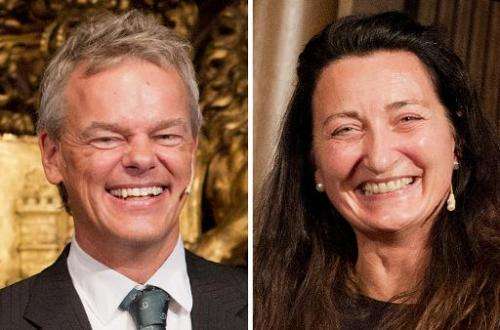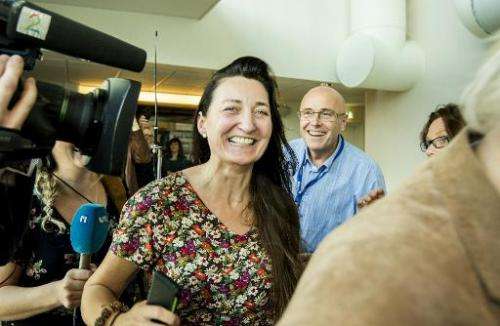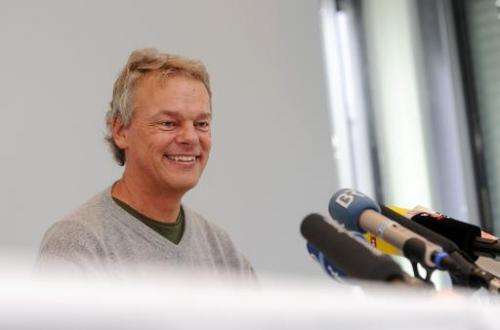The 'Curie couple' of the Nordics

Norway's "Curie couple", May-Britt and Edvard Moser, have been virtually inseparable since their university days, but when news broke they had won the Nobel Medicine Prize, they were hundreds of miles apart.
The Moser couple work at the Norwegian University of Science and Technology (NUNT) in the western city of Trondheim, where they manage two institutions together.
They were awarded the prize jointly with their British-American mentor, John O'Keefe, for discovering an "inner GPS" that helps the brain navigate, and more specifically, the cells that help us orient ourselves.
May-Britt Moser, 51, was at a meeting when she got the call from Stockholm and almost felt like not picking up.
"In general, I don't pick up if I don't know the number. Then, I thought I had to make an effort, but I hadn't thought about what day it was," she told AFP.
"I locked myself in my office and (the Swedish Nobel Institute) told me what it was about. I started to cry, I was in shock."
Her husband Edvard, who is one year older, was on a plane to Germany. Even though he was surprised receiving some 150 emails during the Oslo-Munich flight, he did not realise he was a Nobel laureate until a representative of the airport and a member of the Max Planck Institute told him.
More than a century after Pierre and Marie Curie, who won the physics prize in 1903, the Mosers are the fifth couple in history to receive a joint Nobel award, and the first Norwegians to get the medicine distinction.

Born on two different islands into families without academic tradition, May-Britt and Edvard went to the same high school, but it was at university in Oslo where they engaged in a relationship. That was also where they decided together to do research in neuroscience.
In 1988, the pair spent hours at the office of Per Oskar Andersen, a renowned neuroscience professor, until they finally convinced him to take them under his wing.
'The lab is their child'
The idea was to study the role of the activity of certain nerve cells in animal behaviour. How much could one amputate the hippocampus, a part of the brain associated to memory, before a rat was unable to remember its environment?
Developing previous studies on the so-called "place cells" identified by co-laureate and mentor O'Keefe, the Mosers discovered the "grid cells", which form a coordinate system that allows for spatial navigation.
Born in 1939 in a family of Irish immigrants in New York, O'Keefe obtained his PhD in Canada and then moved to Britain, where he developed his scientific career.
Edvard describes him as a "fantastic mentor".

The Mosers' discoveries from 2005 gained them some notoriety, and it is easy to find them posing with their rats on the media.
May-Britt, who was a member of an animal rights group in her youth, said that they treat their lab rats "like pet animals".
Despite their media exposure, they were far from expecting to win the Nobel prize.
"Honestly, we knew that our candidacy had been proposed," she told AFP.
"But we are still extremely young" to win an award with laureates who have an average age of 58.
The pair have no intention to stop working in their field.
"They say the lab is their third child," said Isabel, one of the couple's two daughters
© 2014 AFP



















